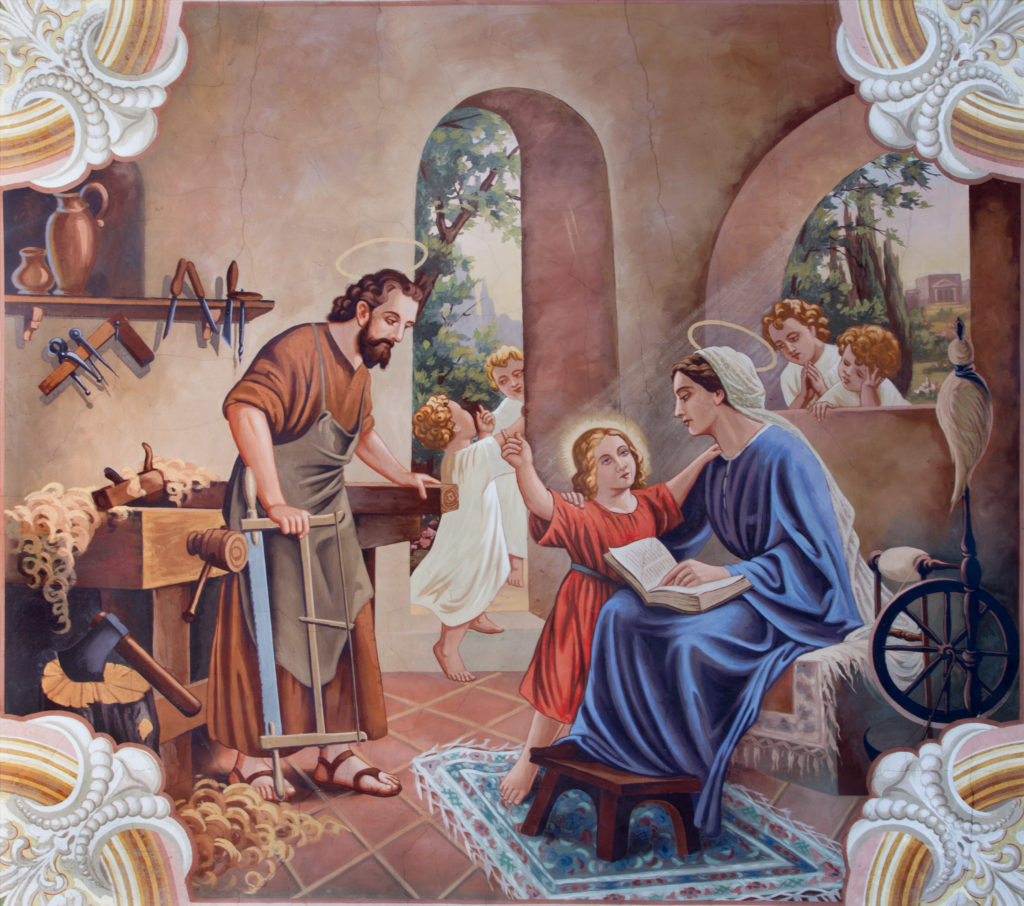
La Sagrada Familia
El primer domingo después de la Natividad de Nuestro Señor Jesucristo los cristianos celebramos la fiesta litúrgica de la Sagrada Familia. Los latinos somos un pueblo muy unido a la familia. Familia para nosotros no es un pequeño grupo compuesto de padre, madre e hijos. Para los latinos, la familia es un conjunto grande de abuelos, tíos, tías, primos, comadres, compadres, y otros parientes además de padre, madre, hijos, e hijas. Para los latinos una fiesta que celebra la familia de Jesús es la cosa más natural del mundo.
Es extraño que esta fiesta no sea muy antigua; en realidad, es una celebración que data de comienzos de la época moderna en el siglo XVII. Antes de estas fechas la familia de Jesús no se celebraba y cuando se pintaba o esculpía casi siempre se veía compuesta por Jesús, María, y Ana, la madre de María, es decir, la abuela de Jesús. Se daba por hecho que José estaba por allí, pero porque no era el verdadero padre, no se le daba importancia. Incluso, el pobre de san José no tenía su fiesta propia, y no fue sino hasta el siglo XV que toda la Iglesia reconociera la fiesta de san José el 19 de marzo.
En el siglo diecisiete muchos niños perdieron sus padres debido a que sus padres tenían que salir del hogar para trabajar. Fue entonces cuando los padres le dejaron el trabajo de educar a los niños completamente a las madres. La Iglesia se preocupó de que los padres, cansados de tanto trabajar ignoraban a sus hijos por eso dieron un nuevo giro a la función que José jugó en la vida de Jesús. De esta forma, el Magisterio de la Iglesia, creó la conmemoración de la Sagrada Familia: Jesús, María y José para recordar a los padres cristianos su deber ante sus hijos y mujer.
Fray Gilberto Cavazos-González, OFM, Copyright © J. S. Paluch Co.
The Holy Family
On the first Sunday after Christmas, we celebrate the feast of the Holy Family of Jesus, Mary, and Joseph. Family is very important to Latinos. For us, the family is not a small group composed of father, mother, and children. Rather, it is a large group of grandparents, uncles, aunts, cousins, godmothers, godfathers, and other relatives in addition to father, mother, and children. For Latinos, a feast that celebrates the family of Jesus is the most natural thing in the world.
It is strange that this feast is not very old. In reality, it is a celebration that dates from the beginning of the modern era in the seventeenth century. Before that, there was no celebration of the family of Jesus. Paintings or sculptures of the Holy Family were almost always composed of Jesus, Mary, and Anne, Mary’s mother and Jesus’ grandmother. It was understood that Joseph was around, but because he was not the “real” father, he was not considered important. In addition, poor Saint Joseph did not have a feast day until the fifteenth century, and only in the seventeenth century did the whole Church observe his feast on March 19.
In the seventeenth century, many children lost their fathers to work outside the home. It was then that fathers left the work of educating the children completely to mothers. The Church was worried that fathers, tired from so much work, ignored their children. For that reason, the role of Saint Joseph was elevated. Thus began the commemoration of the Holy Family of Jesus, Mary, and Joseph in order to remind each Christian father of his obligation to his children and wife.
Friar Gilberto Cavazos-González, OFM, Copyright © J. S. Paluch Co.

